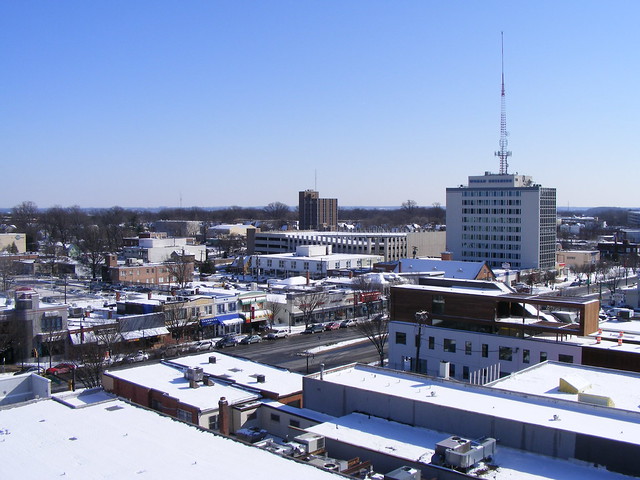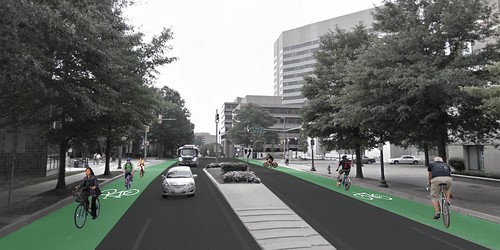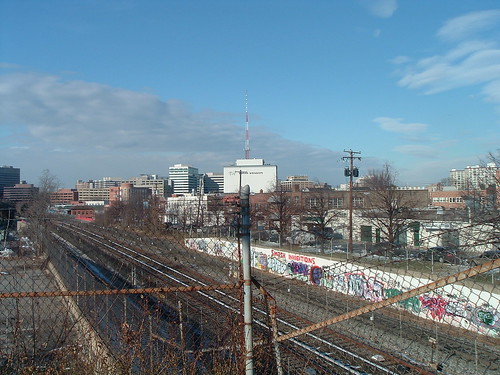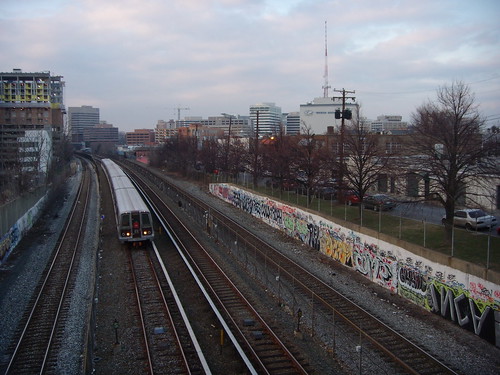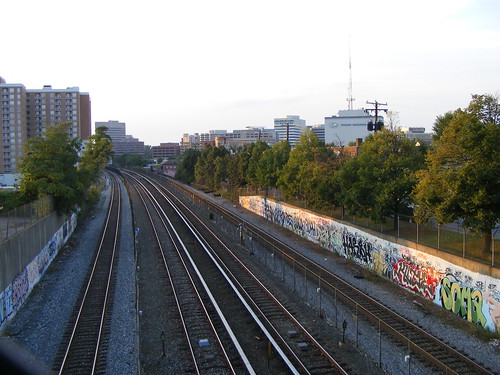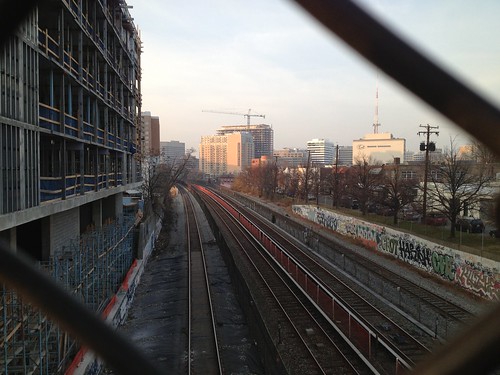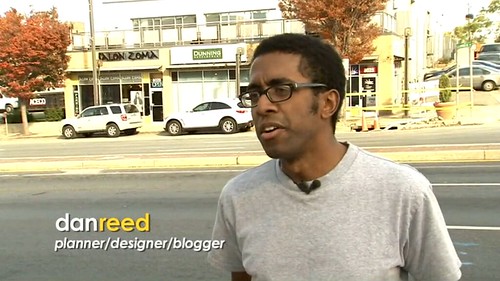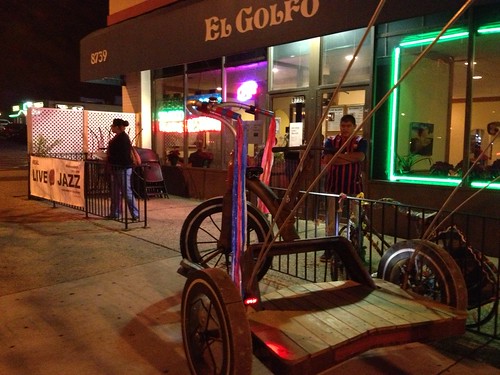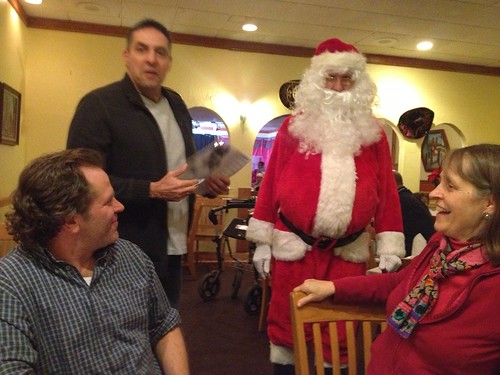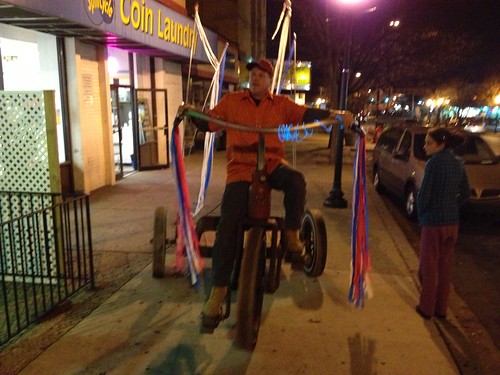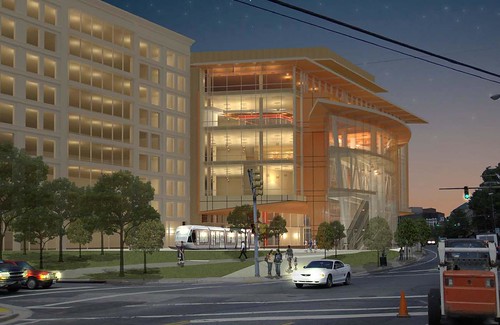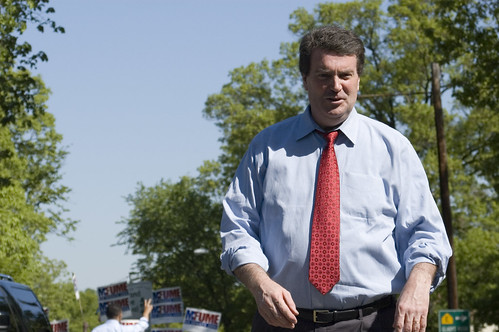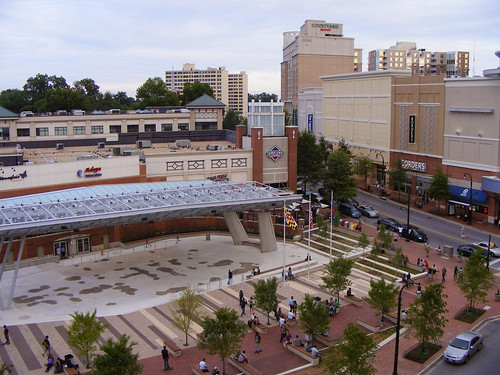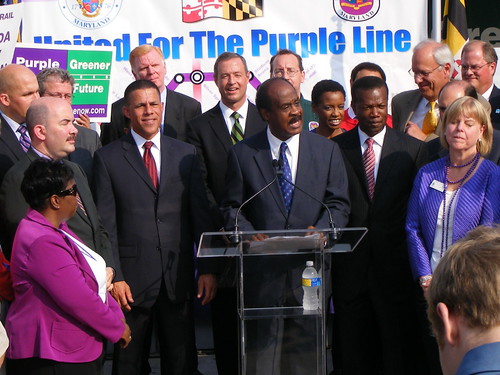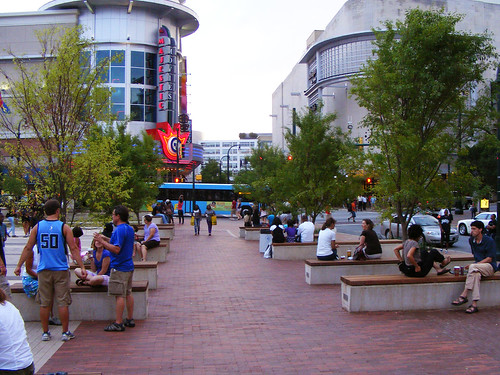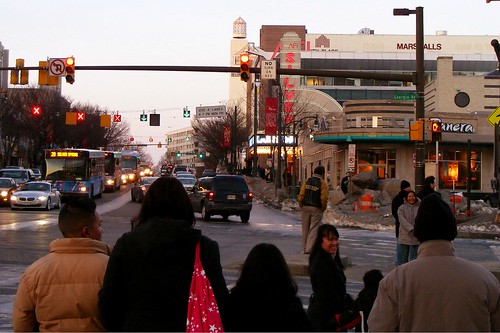 |
| Nearly 60% of downtown Silver Spring residents get to work without a car. |
For decades, Montgomery County has promoted transit-oriented development as a way to provide alternatives to driving, but some say it hasn't worked, claiming most people "
will drive no matter what." However, a detailed look at commuting habits in specific neighborhoods clearly shows that people will leave their cars at home if there are other options.
I looked at data from the Census Bureau's 2006-2010 American Community Survey to see how Montgomery County's 502,000 employed residents get to work. Countywide, two-thirds of commuters drive to work alone. 15% take public transit, 11% carpool, and 5% work at home. Just 2 percent walk or bike to work. While those numbers may seem impressive for a suburban area, they may seem underwhelming for anyone who envisions a more urban future for the county.
Break it down by neighborhood and commuting habits vary dramatically. In places with reliable, frequent transit service, or jobs within close proximity, or were designed to encourage walking, biking and transit use over driving, commuters take advantage of the options they're given. Not only does this data suggest that the county's policies have been successful, but it provides some guidance for how to encourage more walking, biking and transit use in the future. (For a closer look at the data, you can see
my spreadsheet and consult
this map of the county's census tracts.)
Taking transit to work
Here's a map of the county broken down by census tract, showing the areas where transit use is above the countywide average of 15 percent:
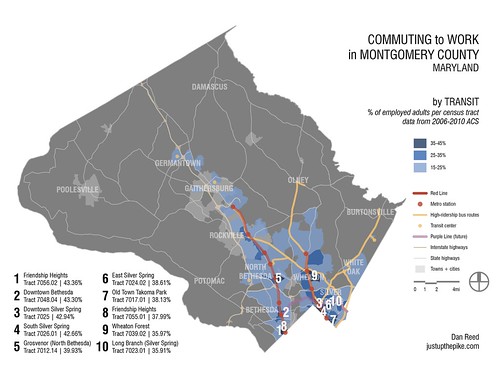 |
| Census tracts with the highest percentage of transit commutes. Click here to see this image without the ranking labels. |
Not surprisingly, people use transit more in areas where there's lots of transit, like around each of the county's 13 Metro stations. (I'm counting Takoma and Friendship Heights, which are both in the District, since they're within walking distance of Montgomery County.)
Over 40% of commuters take transit to work in Friendship, downtown Bethesda, downtown Silver Spring and South Silver Spring, where for decades the county has sought to concentrate jobs, housing and other amenities. Census Tract 7012.14, a concentration of apartments and condominiums just east of the Grosvenor-Strathmore Metro station in North Bethesda, wasn't far behind.
Commuters will choose the bus as well if the service is good. Transit use was high along corridors with frequent bus routes that run all day, seven days a week, like Veirs Mill Road, University Boulevard, Georgia Avenue, New Hampshire Avenue and Columbia Pike. Metrobus lines serving these roads, like the C, K, Q, Y and Z, are among the
most-used routes in Maryland.
In tract 7023.01, which covers part of the Long Branch neighborhood of Silver Spring, there's no Metro station, but there are over a dozen Ride On and Metrobus routes. As a result, nearly 36% of commuters there use transit.
While the areas with above-average transit ridership were almost entirely in the Downcounty and East County, there were also a few Upcounty neighborhoods, like around the Germantown and Lakeforest transit centers, both of which are major Ride On hubs. This is impressive considering that these areas were built after World War II, when it was assumed that
everyone would drive everywhere.
Walking and biking to work
Here's a map showing census tracts where the percentage of walkers and bicyclists is above the countywide average of 2.49 percent:
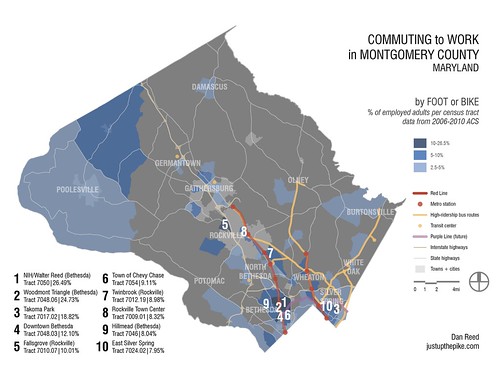 |
| Census tracts with the highest percentage of foot and bike commutes. Click here to see this image without the ranking labels. |
This map bears some similarities to a "
bicycling heat map" created by Montgomery County planners last year to determine what areas of the county would have the highest demand for bicycling infrastructure. As it predicted, walking and biking rates are higher in the county's downtowns, like Silver Spring, Bethesda and Rockville, where homes and jobs are within walking distance of one another.
However, there also appeared to be a connection between above-average walking and biking and proximity to a major educational, research or medical institution. There's a high instance of walkers and bikers around the National Institutes of Health and Walter Reed National Military Medical Center in Bethesda. About a quarter of commuters walk or bike to work in tracts 7050, which includes both facilities, and 7048.06 next door in downtown Bethesda. Meanwhile, almost 19% of commuters walk or bike to work in tract 7017.02 in Takoma Park, which includes Washington Adventist Hospital and Washington Adventist University.
And one out of ten commuters walk or bike in the recently-built Fallsgrove neighborhood of Rockville. Located miles from a Metro station and lacking good bus service, Fallsgrove has lower-than-average transit use.
However, it has
interconnected streets and a mix of
homes,
shops and
offices, making it easy to get around on foot or bike. It's also across the street from the
Shady Grove Life Sciences Center, home to major employers like Johns Hopkins University and Shady Grove Adventist Hospital.
There were also above-average instances of walking and biking in rural communities, like Burtonsville, Potomac and Damascus. I'm not sure why this happens, but it bears further investigation.
Conclusions
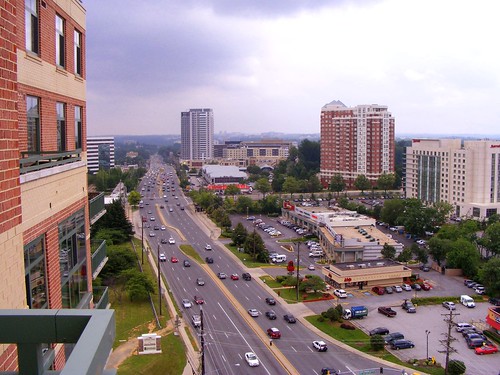 |
| The data suggests ways we can increase walking, biking and transit use in places like White Flint. |
While this wasn't an exhaustive look at commuting habits, one pattern is clear: people will choose not to drive when real alternatives are available. If you provide fast, frequent transit service that's as convenient if not more so than driving, commuters will use it. And if people live close enough to their jobs, they'll consider walking or biking to work.
The best way to encourage these behaviors is by building up around our transit network. More people living in places like Bethesda, Silver Spring or White Flint means more people who can reach their jobs by foot, bike or transit.
But that's not all. We need to create a pleasant walking experience in these areas, which can
encourage people to walk farther. We need to provide
adequate bicycling infrastructure to attract a wider range of bicyclists.
And we should acknowledge that even people who live in transit-rich areas like downtown Silver Spring and take transit to work might still
drive three blocks to the grocery store. There will be cars in Montgomery County for a long time to come, even if they have to share space with pedestrians, bicyclists and transit.
